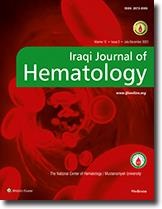Abstract
Abstract:
INTRODUCTION: The impact of severe acute respiratory syndrome coronavirus 2 on global health has
been considerable since its emergence. Clinical laboratories are crucial in the diagnosis, treatment,
and prognosis of patients with coronavirus disease 2019 (COVID‑19). The study aims to review the
published literature on the abnormal morphological features found in the peripheral blood smears
of patients with COVID‑19.
MATERIALS AND METHODS: A nonsystematic narrative review was carried out, utilizing four
databases to search for publications that presented qualitative alterations in the peripheral blood
cells of individuals with COVID‑19. Thirty‑three studies published between January 2020 and July
2022 were ultimately included in the review.
RESULTS: The majority of the studies reviewed focused on qualitative changes, with peripheral blood
cell shape identified as an indicator of post‑COVID‑19 syndrome severity. Plasmacytic cells were
found to be a relatively specific marker for COVID‑19, while fragmented neutrophils were identified
as an extremely sensitive morphological marker. Activation of monocytes was a strong predictor of
disease outcome, and platelet aggregates served as an indicator of disease progression.
CONCLUSIONS: The identification of morphological abnormalities in peripheral blood cells can aid in
diagnosing and prognosticating COVID‑19 patients. Daily complete blood count tests in hospitalized
patients are crucial for identifying numerical and morphological irregularities that indicate poor clinical
outcomes and disease progression.
INTRODUCTION: The impact of severe acute respiratory syndrome coronavirus 2 on global health has
been considerable since its emergence. Clinical laboratories are crucial in the diagnosis, treatment,
and prognosis of patients with coronavirus disease 2019 (COVID‑19). The study aims to review the
published literature on the abnormal morphological features found in the peripheral blood smears
of patients with COVID‑19.
MATERIALS AND METHODS: A nonsystematic narrative review was carried out, utilizing four
databases to search for publications that presented qualitative alterations in the peripheral blood
cells of individuals with COVID‑19. Thirty‑three studies published between January 2020 and July
2022 were ultimately included in the review.
RESULTS: The majority of the studies reviewed focused on qualitative changes, with peripheral blood
cell shape identified as an indicator of post‑COVID‑19 syndrome severity. Plasmacytic cells were
found to be a relatively specific marker for COVID‑19, while fragmented neutrophils were identified
as an extremely sensitive morphological marker. Activation of monocytes was a strong predictor of
disease outcome, and platelet aggregates served as an indicator of disease progression.
CONCLUSIONS: The identification of morphological abnormalities in peripheral blood cells can aid in
diagnosing and prognosticating COVID‑19 patients. Daily complete blood count tests in hospitalized
patients are crucial for identifying numerical and morphological irregularities that indicate poor clinical
outcomes and disease progression.
Keywords
Blood smear
coronavirus disease 2019
Morphology
peripheral blood cells
severe acute respiratory syndrome coronavirus 2
